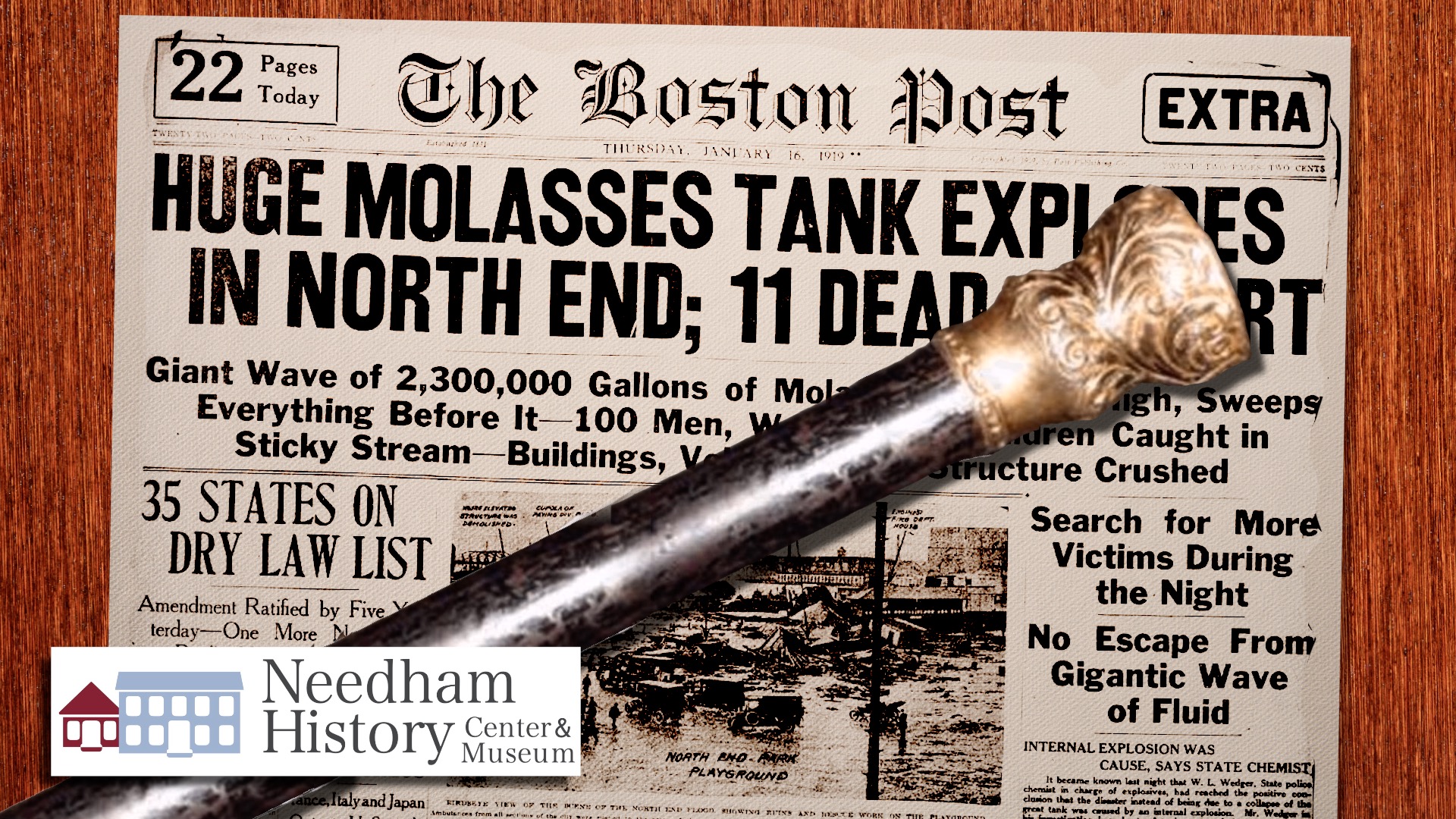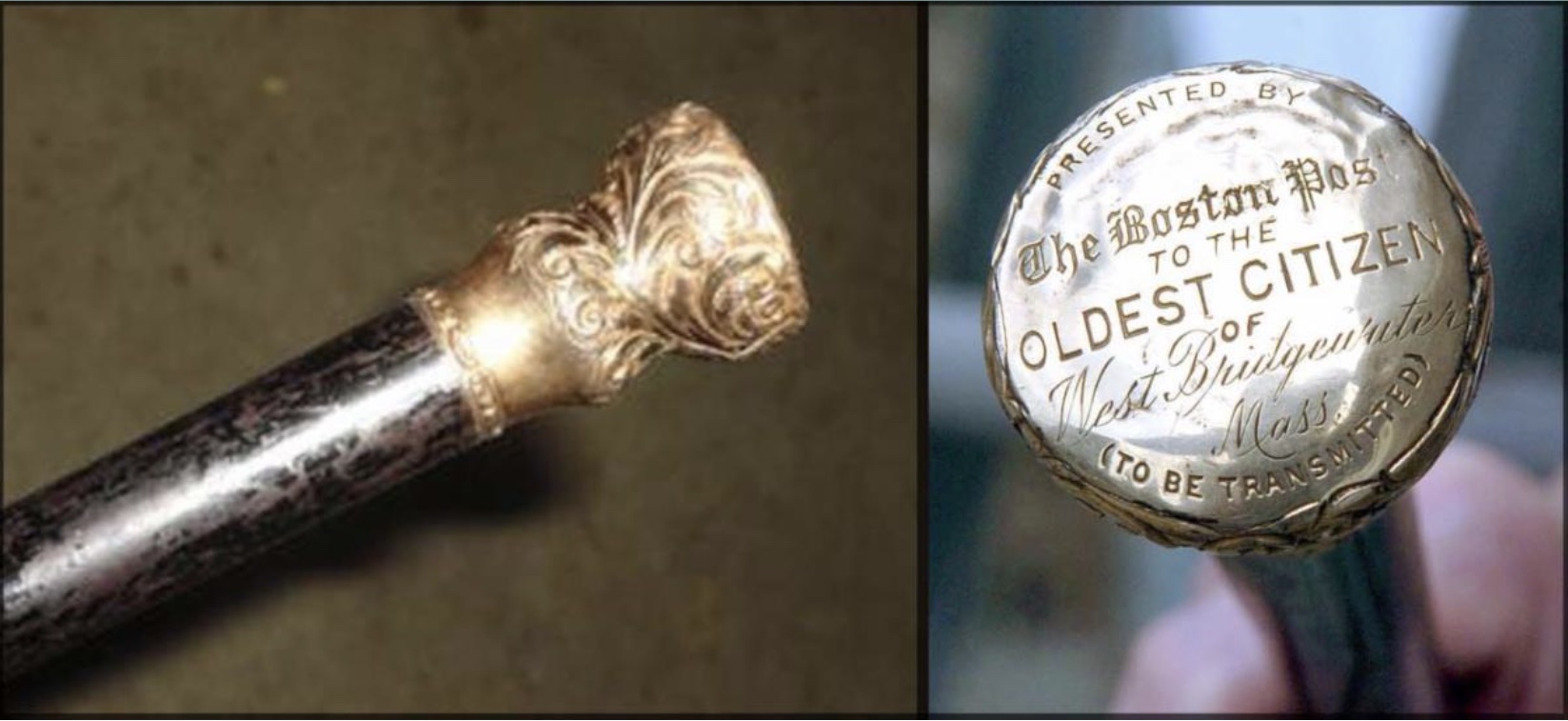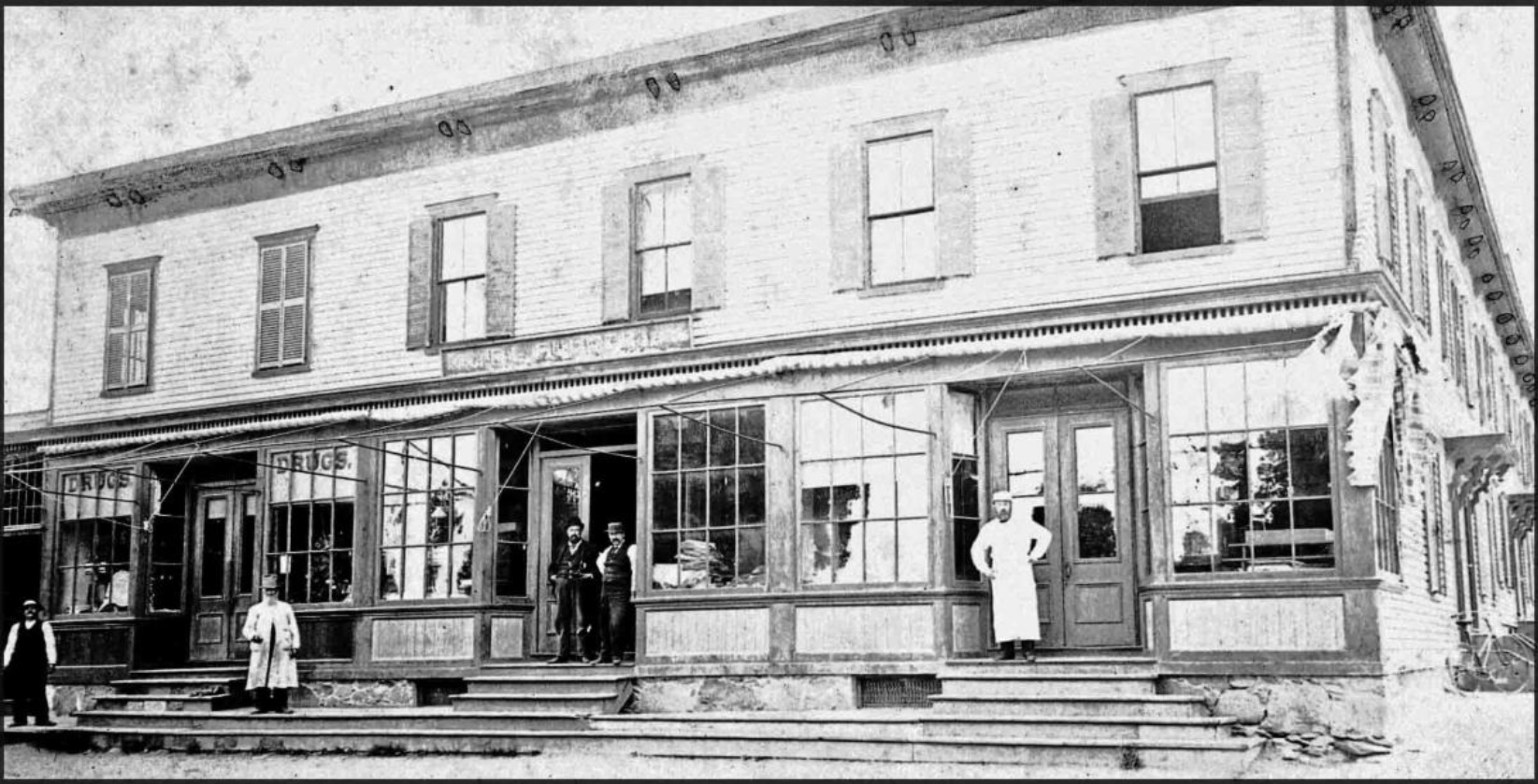
Needham History: The Boston Post Cane
Thanks – but no thanks!

West Bridgewater’s Boston Post Cane, which is identical to Needham’s except for the town name in the inscription. I was unable to get a good photo of Needham’s cane, since it is behind glass in the Select Board room.
The Boston Post Cane
There was a recent story in the New York Times about the Boston Post Cane. Specifically, about how an award that was supposed to be a cherished honor is regarded by many recipients as more of a dubious honor.
The Boston Post Cane is a tradition that dates back to 1891, when Edwin Atkins Grozier purchased the Boston Post. The newspaper was nearly bankrupt, so Grozier needed a stunt that would attract attention to the paper and drive up readership. In 1909, Grozier purchased a large lot of ebony canes that had gone unclaimed. He then contacted the Selectmen of roughly 700 towns in Maine, Massachusetts, New Hampshire, and Rhode Island, offering to provide an engraved gold and ebony cane to be presented to the oldest male citizen in town (women were not eligible until much later). The heads of the canes would be inscribed “Presented by the Boston Post to the oldest citizen of [Name of Town]. To be transmitted.”
The town’s Selectmen would be the “owners” of the canes, and be expected to “act as trustee to see that the stick be duly presented and duly transmitted when a change of owners became necessary.” In other words, when the current holder succumbed to old age, the Selectmen were responsible for reclaiming the cane and awarding it to the next recipient.
Even in 1909, the response was mixed. Some towns declined, not wanting to be responsible for the cane and the process of keeping track of it and awarding it appropriately. As for the potential recipients – many were honored to be recognized as the oldest person in town. But many were not. Some rejected the idea that they were considered “old;” others did not want their age revealed for all to know. Some were miffed that the cane was a loan and not a gift, and that they had to give it back. Increasingly the cane took on the aura of a curse – like the cry of the banshee, receipt of the cane was a portent of your death.
Even so, the stunt was successful for Grozier. Circulation of the Post skyrocketed to more than 600,000 in the first half of the century. For a time, it was one of the most widely-read papers in the country.
The canes themselves have had a checkered history. Of the approximately 600 or so canes that were distributed, roughly 30% appear to be missing altogether. Some have been lost or destroyed, and some stolen (ebony and gold are more valuable now than they were in 1909). Some were never reclaimed from the family and have been misplaced over time. Some towns with “lost” canes have made strenuous efforts to find and reclaim them. They do show up in auction sales and on eBay on occasion, and several have been recovered in recent years.
As the canes became more valuable, and as awarding and reclaiming them became more onerous for the town, many towns have created alternatives. Some towns award replica canes instead of the original. Some award a “Boston Post Certificate” instead, attesting to the status of the individual as the town’s oldest citizen. One town created a lapel pin replica of the cane’s engraved head, and awards that instead of the cane itself. And, of course, many towns no longer award the cane or a substitute at all.
Needham is one of the towns that possessed and awarded the Boston Post Cane for many years. The record of cane-holders is incomplete, but this is what I was able to find. The list is chronological, but there are gaps:
• Needham’s first recipient was Augustus Eaton. Eaton was a carpenter and dairy farmer. He lived in Needham all his life, and was awarded the cane in October 1909, when he was 86 years old. At the time he ascribed his long life to never having used tobacco or liquor.
• Samuel Corey Richardson, dates unknown.
• Caleb Crawley, December 1915, at the age of 88. He succeeded Samuel Corey Richardson. Crawley attributed his longevity to having never been a smoker and having never “bent the elbow” for a drink, as well as his lifelong habit of being early to bed and early to rise.
• Simon Cotrell, date of receipt unknown, but he died in 1932 at the age of 93. He was a veteran of the Civil War.
• John Torrey Morse, March 1937 at the age of 97. Morse was an attorney in Boston, as well as the author of ten books of history and biography. He served in the MA Legislature in 1875-76. Morse held the Cane only briefly, as he passed away that same month.
• William Newhouse, dates unknown.
• Oliver Crisp, October 1947 at the age of 95. He was formerly the owner of Crisp’s Meat Market in the Heights. The paper noted that he was “remarkably active and alert for his advanced age, and enjoys his daily walk.” He succeeded William Newhouse.
• C.S. Pierce, September 1951, at the age of 92. Pierce was a farmer, who lived his whole life on the farm where he was born on Charles River Street. He succeeded Oliver Crisp as holder of the Cane.
Oliver Crisp as holder of the Cane.
• William Sweeney, June 1955, at the age of 90.
• Paul Richwagen, in 1960 at the age of 91. The Richwagen family owned a florist business on the site of what is now Sudbury Farms.
• Lucretia Butterfield, August 1966, at the age of 100.
• Annie Barton, June 1970, at the age of 99.
I do not know when Needham stopped awarding the Boston Post Cane, and the town does not seem to have a record either. The ceremony was discontinued at some point, and there does not seem to have been an alternative award. We do, however, know where our cane is located. For the last 30 or so years, it has been on display on the wall of the Select Board chamber in Town Hall.
The Boston Post finally folded in 1956, after 125 years in print. Almost no one remembers the paper itself, but towns all over New England know the name from the cane that honors (or terrifies!) their oldest citizens.
Oliver Crisp (in the white apron, right) in front of his market on the corner of Highland Avenue and West Street, circa 1900. Crisp was awarded the Boston Post Cane in 1947, at the age of 95. The building, which is still standing, is now the location of Starbuck’s.

 |
Gloria Polizzotti Greis is the Executive Director of the Needham History Center & Museum. For more information, please see their website at www.needhamhistory.org. |

